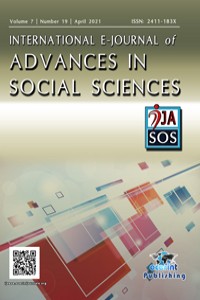Abstract
References
- Chraska, M. (2007). Metody pedagogickeho vyzkumu: zaklady kvantitativního vyzkumu. Vydání 1. Praha: Grada Publishing, 265 p.
- Klement, M., Chraska, M., Dostal, J., Maresova, H. (2012). E-learning – elektronicke studijni opory a jejich hodnoceni. Olomouc: Gevak, 341 p.
Abstract
We live in a world of modern technology. Information technologies surround us at every step, helping us, making our life easier, and providing many benefits. This modern lifestyle is also changing the way we perceive information technology. Few people today can imagine working and learning in everyday life without a computer, laptop, smartphone, or Internet access. The use of electronic teaching aids is a new, modern approach to education. Previously, the use of e-learning materials was the prerogative of distance learning. The main reason was the very limited possibility of personal contact between teachers and students. The issue has become even more urgent given the epidemiological situation around the world. In connection with the massive spread of the new coronavirus infection, students and schoolchildren all over the world were forced to switch to electronic educational resources to continue their studies. In connection with the introduction of similar approaches as in universities and schools, it is very important to prepare future teachers for the correct use of these technologies.
Targets and goals. Explore: 1) whether the students are familiar with the electronic teaching aids and whether or not they are satisfied with them; 2) whether students prefer to learn more through traditional printed learning materials or e-learning materials and whether these preferences differ depending on the field of study; 3) Whether students of technical and mathematical specialties prefer electronic teaching materials to traditional printed materials; 4) what sources of information students use in their research work, and to what extent; 5) the advantages and disadvantages of both electronic teaching aids and traditional printed teaching materials.
The research focuses on the opinions of 560 students (of which 280 are women and 280 are men) of the Chuvash Pedagogical University about electronic teaching materials and traditional printed teaching materials. The study was conducted from March to November 2020. The survey was aimed at first-year students of various undergraduate disciplines in full-time education in the following specialties: mathematics, physics and information technology, preparation of primary school teachers, history and social science, biology and chemistry, Russian language and literature, Chuvash language and literature, German language and literature, English language and literature. Next, we divided students in accordance with the kinship of areas into 4 groups: a) mathematics + technical and information education, b) training of primary school teachers, c) philology d) social sciences. We used our own questionnaire as a research method. The following methods were used to process the data: analysis of variance, correlation, and Chi-square test. The study showed that freshmen of the Chuvash State Pedagogical University mainly use ready-made methodological developments, the Internet, their own notes, and books as sources of information for their studies. 50% of students are familiar with the concept of e-learning materials, and 32.14% of students became familiar with them in high school or university. The difference between these two data is due to the fact that the concept of e-learning materials was unknown to some students, but when filling out the questionnaire they found that they used this type of materials during their studies. Average student satisfaction with e-learning materials and traditional printed learning materials is almost the same. In addition, it turned out that 65% of students prefer to study using traditional printed materials. It was determined that students studying mathematics and information technology, more than other students, either prefer to learn through e-learning materials or do not prefer one particular type. The most common form of e-learning materials that students have encountered is the LMS. The respondents see the advantages of e-learning materials as consisting of accessibility, clarity, quick access to information, low cost, paper savings (resulting in environmental protection), and interactivity. Although students stated that they prefer to use traditional printed teaching materials, 83% of respondents would like to continue using e-learning materials during their studies.
References
- Chraska, M. (2007). Metody pedagogickeho vyzkumu: zaklady kvantitativního vyzkumu. Vydání 1. Praha: Grada Publishing, 265 p.
- Klement, M., Chraska, M., Dostal, J., Maresova, H. (2012). E-learning – elektronicke studijni opory a jejich hodnoceni. Olomouc: Gevak, 341 p.
Details
| Primary Language | English |
|---|---|
| Journal Section | Makaleler |
| Authors | |
| Publication Date | May 7, 2021 |
| Submission Date | February 3, 2021 |
| Published in Issue | Year 2021 Volume: 7 Issue: 19 |
Contact: ijasosjournal@hotmail.com
The IJASOS Journal's site and its metadata are licensed under CC BY
Published and Sponsored by OCERINT International © 2015- 2025

